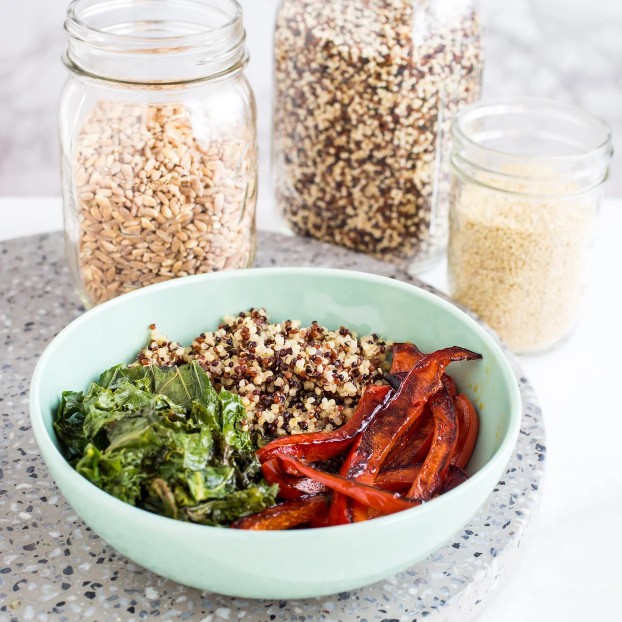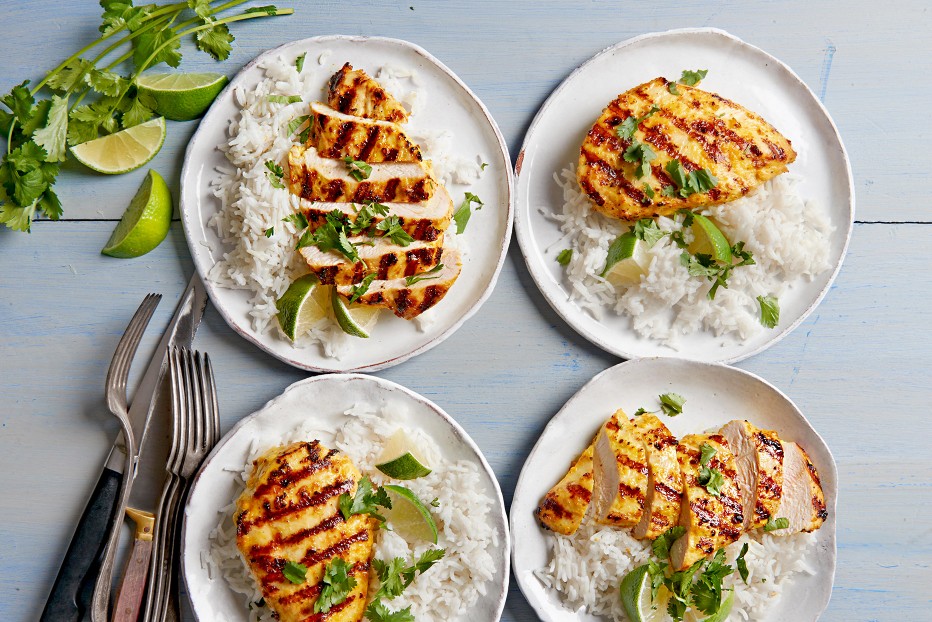If you're wondering if you can substitute one ingredient for another in a dinner recipe, the answer is (probably) yes! Here's what you can use to cook a meal on the fly.
Planning ahead is great, but even the best cooks can't be expected to have every single ingredient in the universe in their kitchen at all times. And when you can't get to the store – for example if you are social distancing – or if stores are sold out of ingredients it's completely fine to turn to substitutions.
When it comes to savory dishes, it's generally not a big deal to substitute like for like in recipes. Don't have pork chops? Chicken breasts are fine! No cherry tomatoes? Try diced red bell pepper instead. Out of kale? Chard or spinach are fantastic.
But if you're still worried about messing up a recipe, here's a checklist of frequently used ingredients and simple substitutions for each.
Keep in mind that some ingredients, like fresh herbs or scallions, will have a stronger flavor depending on which variety you're using, so start with smaller amounts and taste as you go.
Who knows? Use what you have on hand – and you may like your improvised meal even more than the original.
Casey Barber
Hearty grain bowls like this one with quinoa, kale and peppers can be made with any grain, vegetable and seasonings or sauces you have on hand.
What Can I Substitute For…
Quinoa and Other Grains
Generally, you can substitute one whole grain for another in dishes: quinoa, bulgur, brown rice, barley and millet are all healthy and tasty options for grain bowls, pilafs and side dishes.
Onions and Shallots
If a recipe calls for shallots, remember: they're just members of the onion family, as are leeks and scallions. Any of these can be used interchangeably. And if a recipe calls specifically for one type of onion (red, yellow, sweet, etc.), you can always use another type in its place.
Garlic
If you're out of fresh garlic, pick up a jar of minced garlic in water as a substitute. Or if dried garlic powder is available, use 1/4 to 1/2 teaspoon powder in place of each clove, tasting for potency as you season.
Fresh Vegetables
Stocking your freezer with frozen vegetables is a surefire strategy for substitution success. For stews and other recipes where vegetables are sautéed or simmered, just use the same amount of frozen vegetables as you would fresh.
For noodle salads and other recipes where fresh vegetables are the norm, stick to smaller frozen ingredients like corn, peas or edamame, and thaw before adding.
Milk
For savory dishes, you can replace cow's milk with a number of nondairy milks – just make sure you're choosing the unsweetened variety. Soy, hemp and coconut milk are fairly neutral, but oat milk may be too sweet in this situation.
Fresh Herbs
If you have the dried version of whatever herb your recipe is calling for, use the ratio of 1 teaspoon dried in place of 1 tablespoon fresh.
If you would like to substitute one herb for another, woody-stemmed herbs like rosemary, thyme and oregano are easy replacements for each other, while leafy herbs like parsley, cilantro and mint can be used in similar amounts.
Butter
Olive oil or vegetable oil are always easy substitutions for butter. If you're running low on general oil and are looking to your specialty oils such as nut oils, remember that many of these have a lower smoke point than vegetable oil, so heat them gently. (See The Best Oils for Cooking.)
Chicken Broth
Any other type broth you have on hand, whether it's veggie or beef, can be used to add flavor to dishes in place of chicken broth (provided it's not chicken soup, of course). In a pinch, you can always just add water and extra seasonings called for in the recipe, such as salt, garlic, and herbs, to take the place of broth. Or use bouillon cubes or paste, which keep indefinitely.
This article was written by Casey Barber from EatingWell and was legally licensed through the Industry Dive Content Marketplace. Please direct all licensing questions to legal@industrydive.com.








